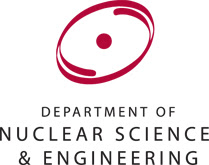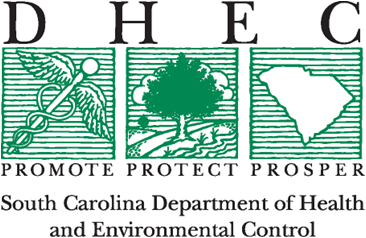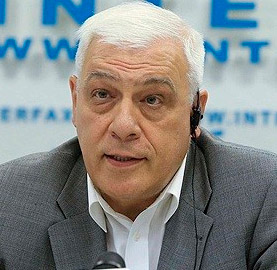
Blog
-
Geiger Readings for Apr 20, 2018
Ambient office = 66 nanosieverts per hourAmbient outside = 109 nanosieverts per hourSoil exposed to rain water = 109 nanosieverts per hourCelery from Central Market = 86 nanosieverts per hourTap water = 73 nanosieverts per hourFilter water = 60 nanosieverts per hour -
Nuclear Weapons 355 – MIT Scientists Are Developing A New Method To Verify Nuclear Warheads
Great progress has been made in nuclear disarmament since the height of the Cold War when both the U.S. and Russia had tens of thousands of nuclear warheads. Now they are down to about five thousand warheads each.
One of the big problems with nuclear disarmament is verification. The exact design of nuclear warheads is highly classified in all nations that possess them. How do you prove that a warhead has been destroyed without being able to examine the detail of its construction and the exact radioactive material that it contains? Up to this point, disarmament efforts have been focused on the elimination of delivery systems which are much easier to verify.
Scientists at MIT have published papers in Nature Communications and The Proceedings of the National Academy of Sciences that lay out their ideas for two different variations on a new verification system for nuclear warheads. Areg Danagoulian, the senior author of both papers, is a MIT assistant professor of nuclear science and engineering.
There are two essential elements in the construction of a nuclear warhead. The exact mixture of weapons grade radioactive materials and the dimensions of the core or “pit” that contains the radioactive materials. This is top secret military information.
Measuring the radiation given off by a supposed nuclear warhead is not enough to prove that it is really a nuclear warhead. It could a dummy warhead that contains non-weapons grade nuclear material that gives off the characteristic signature of a real warhead. There are isotope-sensitive resonant processes that can be used to analyze the exact isotope mixture and the shape and size of the pit but this would reveal the information that all nuclear armed nations want to keep secret. The MIT team came up with the idea of a physical “key” that would contain a sample of the isotopes that are in a real warhead. The group carrying out inspections of warheads would not know the exact mixture in the key.
One way to think about this system would be to substitute different colors for the different isotopes. The warhead would be visualized a combination of colors. A filter could be created that would combine the compliments of the colors representing the warhead. If the filter was laid over the sheet of colors representing the warhead, the result would be uniform black. If the warhead was a fake, then there would be visible colors when the filter was applied.
In the MIT system, the colors are replaced by isotopes. The country that produced a warhead would also produce the filter or key. The key would be a cryptographic reciprocal or a cryptographic foil. The warhead being inspected could be hidden inside a black box to prevent revealing its construction.
In one version of the MIT system, the warhead is lined up with the foil and a beam of neutrons applied. A detector then reveals the isotope-specific resonant signatures. The neutron scan is rendered as a visible image. If the image is blank, the warhead is real. If the warhead is not real, then the image shows details of its construction.
The alternative MIT system would use photons instead of neutrons to scan the foil and warhead. Instead of a visible image being generated, there would be a spectrogram. Both of these processes generate a Zero Knowledge Proof in which a nuclear armed nation can prove compliance without revealing any further information about the details of the construction of their warhead.
So far, the MIT team has only verified their design through sophisticated computer simulations. The next step is to test actual fissile materials at one of the U.S. national nuclear laboratories.
-
Geiger Readings for Apr 19, 2018
Ambient office = 99 nanosieverts per hourAmbient outside = 158 nanosieverts per hourSoil exposed to rain water = 158 nanosieverts per hourBartlett pear from Central Market = 101 nanosieverts per hourTap water = 65 nanosieverts per hourFilter water = 48 nanosieverts per hour -
Radioactive Waste 338 – South Carolina Nuclear Waste Landfill Is Before the South Carolina State Supreme Court
For decades radioactive pollution has been leaking into groundwater and a creek from a landfill for nuclear waste near Barnwell, South Carolina. The landfill opened in 1971 and is currently managed by the Chem-Nuclear company.
Chem-Nuclear is a subsidiary of Energy Solutions which is located in Utah. Energy Solutions is also the manger of a low-level nuclear waste repository in Utah. Much of the waste that goes to Utah is lower-level than the waste destined for the landfill in S.C.
The two hundred and thirty-five acre Barnwell site is one of only a few low-level nuclear waste repositories in the U.S. Once the site took in three quarters of the low-level nuclear waste generated in the U.S. Now it only takes waste from South Carolina, Connecticut and New Jersey. The types of waste that are sent to the landfill includes low-level waste such as lightly contaminated hospital gloves and gowns, but also includes more radioactive refuse, such as nuclear reactor parts.
Legal battles over the site have been raging for the past thirteen years. In 2015, the state Court of Appeals issued a ruling saying that Chem-Nuclear, who manages the site, had not done much to keep the rain water out of the trenches that contained the waste. A state regulation states that the company is supposed to prevent rain water from flowing into the pits of waste.
A representative of the Sierra Club told the Court in new hearing today that the state Department of Health and Environmental Control (DHEC) had done nothing to make Chem-Nuclear adhere to the law. They recommended to the Court that it order Chem-Nuclear to employ better disposal practices to prevent rain water from falling into the open pits where the waste was buried. This might include construction of roofs over the burial pits or the construction of water-tight vaults made of concrete to hold the waste.
A representative of Chem-Nuclear told the state Suprement Court that the law actual said that the company had to “manage the water” but not necessarily to keep all rainwater out of the waste trenches. It could take months for the Court to decide the case. If the Court takes the side of the environmentalists who filed the complaint, it could require that Chem-Nuclear makes expensive changes at the landfill.
The primary concern about the landfill is that radioactive tritium is leaking out of the waste filled trenches. Tritium can pose a threat to the health of people who are exposed to it. The pollution is leaking into the groundwater below the site and is also flowing into a creek that is a tributary of the Savannah River.
At least a quarter of the monitoring wells around the landfill have measured tritium levels that are at or above the level allowed by the federal government safe drinking water standard according to data collected by the DHEC. The DHEC says that the tritium pollution levels are stable or decreasing. Some citizens are concerned by the DHEC claims that there is no danger to public health.
-
Geiger Readings for Apr 18, 2018
Ambient office = 69 nanosieverts per hourAmbient outside = 93 nanosieverts per hourSoil exposed to rain water = 94 nanosieverts per hourGarlic bulb from Central Market = 82 nanosieverts per hourTap water = 103 nanosieverts per hourFilter water = 97 nanosieverts per hour -
Nuclear Weapons 354 – Prominent Russian Military Man Says That Nuclear War Between The U.S. and Russia Is Inevitable
The world has lived under the threat of all-out nuclear war for sixty years. At the height of the Cold War, the U.S. and the Soviet Union each had tens of thousands of nuclear warheads. Now the U.S. and Russia have under five thousand warheads each thanks to disarmament treaties.
Studies of the effects of nuclear detonations on the atmosphere have led to the idea of nuclear winter where there is so much smoke and dust in the atmosphere that sunlight is blocked, plants cannot grow and billions of people will die. It has been estimated that only one hundred nuclear warhead detonations would be enough to destroy human civilization. This means that seven nuclear armed countries could bring the end of humanity if they launched their nuclear arsenal.
The Bulletin on the Atomic Scientists has the Doomsday Clock which basically shows a graphic representation of the probability of World War III fought with nuclear weapons. For awhile after the fall of the Soviet Union in 1991, it was believed that the world could pull back from the possibility of nuclear war but recently, cooling relations between some nuclear power suggest that we are still in danger.
Evgeny Buzhinskiy, a former Lieutenant-General under the Soviet Union is now concerned that nuclear war is inevitable. Buzhinskiy was with Russia’s General Staff for sixteen years. He said that because Russia is “lagging behind” the U.S. in terms of military power, Putin would start using tactical nuclear weapons if Russia were losing a conventional ground war other nations. The use of tactical nuclear weapons could easily escalate into the use of strategic nuclear weapons. Because he believes that a confrontation between the U.S. and Russia is inevitable, he believes that the use of nuclear weapons is also inevitable. With the use of chemical weapons in Syria by the Assad regime, the chances of conflict between the U.S. and Russia in the war-torn country are rising.
In an interview with a U.K. news presenter, Buzhinskiy said, “I think it’s worse than the Cold War, which we have been waging for 40 years after the Second World War. In the Cold War time I was in the armed forces and I was quite comfortable I’d say. There were definite duels and definite red lines – everybody knew what to do. There were no threats, no sanctions, no isolation, no cornering, no nothing. There was just ideological confrontation, but people on both sides knew how far they could go.”
When the new presenter asked if he was serious or just trying to scare people, Buzhinskiy said “I am scared myself, because I have children and grandchildren, so I’m scared for their fate.” He pointed out that there are thousands of Russian advisors in Syria and that, if any Russians die because of actions by U.S. forces, Russia will retaliate.
The Russian Foreign Minister said that relations between the U.S. and Russia are worse than the Cold War. He went on to say that the normal channels of communication between the U.S., the U.K., NATO and the European Union that were intended to prevent confrontation have been shut down.
Evgeny Buzhinskiy:
-
Nuclear News Roundup Apr 17, 2018
North Korea Is Firing Up a Reactor. That Could Upset Trump’s Talks With Kim. Nytimes.com
Piping weld issues reported at Électricité de France’s Flamanville nuclear reactor project last week threaten to delay similar reactor builds across Finland and the UK, eroding confidence in the technology’s future role in western Europe’s energy mix. Petroleum-economist.com
The European Union failed to agree new sanctions against Iran on Monday amid Italy’s opposition and fears that punishing Tehran for its missile program and regional role would not stop U.S. President Donald Trump from abandoning a separate nuclear deal. Usnews.com
-
Geiger Readings for Apr 17, 2018
Ambient office = 96 nanosieverts per hourAmbient outside = 117 nanosieverts per hourSoil exposed to rain water = 113 nanosieverts per hourGinger root from Central Market = 113 nanosieverts per hourTap water = 147 nanosieverts per hourFilter water = 139 nanosieverts per hour






